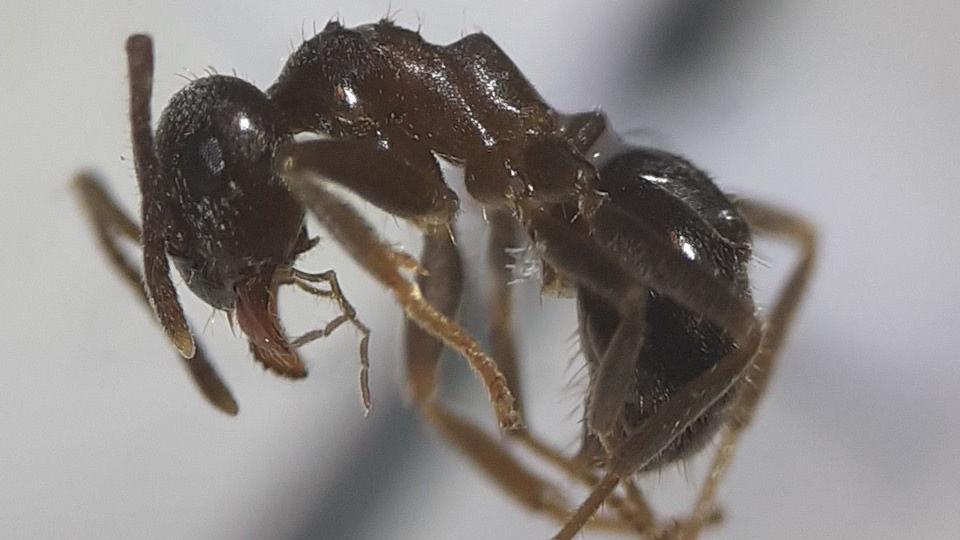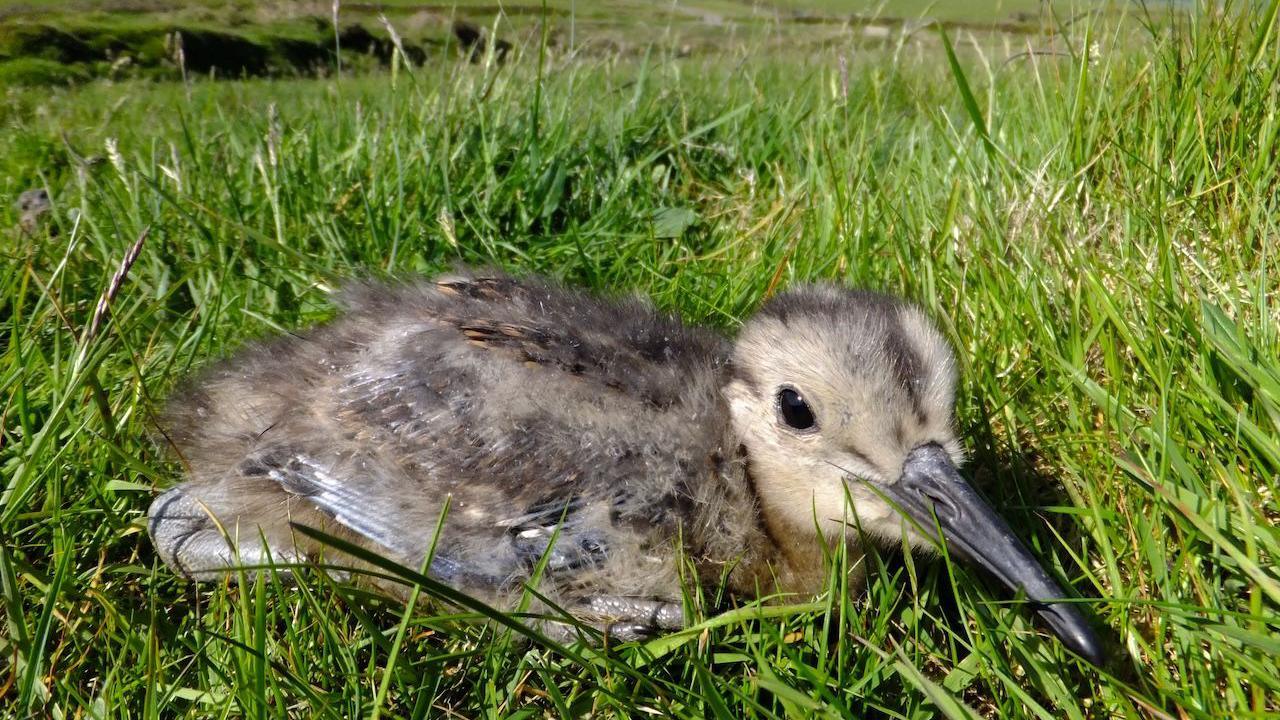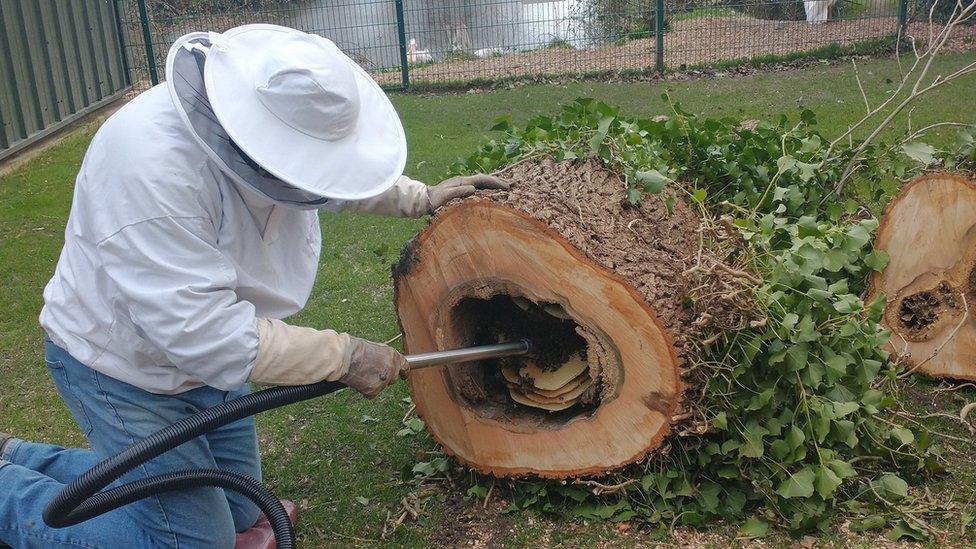Ant species found on island for first time

Lasius platythorax is identified by the short hairs on its upper lip
- Published
A species of ant has been found for the first time on the Isle of Man by a volunteer with a conservation group.
Manx Wildlife Trust (MWT) member Sue Harvey came across the insect, which is a known species elsewhere in the British Isles, at a disused quarry in the south of the island.
Local conservationists said the finding “shows how former industrial sites can become thriving wildlife habitats when cared for properly”.
Ms Harvey said: ‘We’re very conscious as volunteers that there are under-recorded species on this island, and that we don’t know what we’ve got here”.
Rosehill Quarry, near Ballasalla, forms part of the Billown Area of Special Scientific Interest.
A spokesman for the trust said the area's "species-rich character" came from the "shallow alkaline soils, bare rock, and south-facing sun trap", which made it the "perfect home for an ant”.
Ms Harvey is part of MWT’s invertebrate group, which has a handful of volunteers who catalogue insect species and find ones that are new to the island.
She said the quarry’s limestone was uncommon on the island and gave “the potential for finding something”, after she acquired the relevant permissions.
'Symbiotic relationship'
After collecting ants and photographing them with her phone through a microscope, she sent pictures online to the national recorder from the UK’s Bees, Wasps and Ants Recording Society.
That allows experts to provide advice on the species, and whether they are new to a particular area or not.
Following that process, an ant found at the quarry site was found to be the species lasius platythorax, which was identified by the short hairs on its upper lip.
Ms Harvey said that a lot of researchers were keen to get records from the Isle of Man because of its location in the middle of the Irish Sea.
It was also useful for them to "know how various species are impacted by climate change", she added.
Why not follow BBC Isle of Man on Facebook, external, and X, external? You can also send story ideas to IsleofMan@bbc.co.uk
More like this story
- Published18 October 2024

- Published16 February 2023
